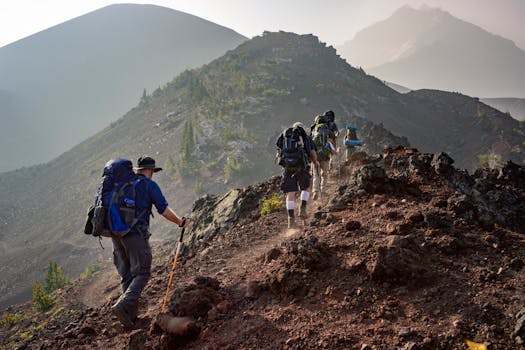Hiking the Inca Trail to Machu Picchu

Hiking the Inca Trail to Machu Picchu is a journey through history, nature, and culture. This iconic trek in Peru offers stunning vistas of the Andes, ancient Incan ruins, and an unforgettable experience that attracts adventurers from around the globe. Spanning approximately 26 miles, the trail combines rugged mountain paths with lush cloud forests, making it a challenging yet rewarding expedition. The journey culminates at Machu Picchu, the legendary Incan citadel that continues to captivate travelers with its architectural brilliance and mystical ambiance.
Historical Significance
The Inca Trail is more than just a hiking route; it is a path steeped in history. Constructed by the Incas over 500 years ago, this trail was part of a vast network of roads that connected the expansive Incan Empire. The trail served as a pilgrimage route to Machu Picchu, which was a sacred site believed to be an estate for Emperor Pachacuti. Walking this ancient path allows hikers to step back in time and imagine the lives of those who once traversed these same stones.
Along the trail, hikers encounter several archaeological sites such as Llactapata, Runkurakay, Sayacmarca, and Wiñay Wayna. Each site provides a glimpse into the sophisticated engineering and architectural prowess of the Incas. These ruins add a layer of depth to the trek, transforming it into an educational adventure.
For those interested in delving deeper into Incan history, resources such as the Peru Travel website offer extensive information on these sites and their significance.
Trail Route and Sections
The Inca Trail can be divided into three main sections: the beginning at Km 82, the ascent through Dead Woman’s Pass, and the final approach to Machu Picchu. Each section presents unique challenges and rewards.
Starting Point (Km 82): The trail begins at Km 82 near Ollantaytambo. This section is relatively moderate and takes hikers through lush valleys and alongside the Urubamba River.
- Llactapata: An early highlight featuring terraces and ruins.
- Wayllabamba: The first campsite for many trekkers.
Dead Woman’s Pass: This is the most challenging part of the trek, reaching an altitude of 4,215 meters (13,828 feet). The strenuous climb tests endurance but rewards with panoramic views.
- Pacaymayo Camp: A common resting spot after conquering Dead Woman’s Pass.
- Runkurakay Ruins: Midway through this section offering historical insights.
Final Approach: The last leg includes descending through cloud forests and passing more ruins before reaching Inti Punku (the Sun Gate), where hikers get their first view of Machu Picchu.
Preparation and Permits
Proper preparation is crucial for tackling the Inca Trail. Due to its popularity, permits are required and must be booked months in advance. Only 500 permits are issued per day, including guides and porters. Booking through a licensed tour operator is mandatory as independent hiking is not allowed.
Essential items to pack include:
- Sturdy hiking boots
- A high-quality backpack
- Weather-appropriate clothing (layers)
- Sufficient water and snacks
- Sunscreen and insect repellent
- A good camera or smartphone for capturing memories
Altitude sickness can be a concern due to high elevations. Acclimatizing in Cusco or nearby areas for a few days before starting the hike is recommended.
Cultural Insights
The Inca Trail isn’t just about physical endurance; it’s also an opportunity to immerse yourself in Andean culture. Many local guides are descendants of the Incas and provide invaluable insights into their traditions, beliefs, and way of life.
The Quechua people, who inhabit this region, have preserved many aspects of their ancestors' culture. Learning some basic Quechua phrases can enhance interactions with locals and enrich your experience. Engaging with local communities along the way adds depth to your journey.
Machu Picchu: The Final Destination
The ultimate reward for hiking the Inca Trail is arriving at Machu Picchu. This UNESCO World Heritage site continues to awe visitors with its intricate stonework, terraced fields, and panoramic views of surrounding peaks. Key structures include:
| Structure | Description |
|---|---|
| The Temple of the Sun | A ceremonial site aligned with astronomical events. |
| The Intihuatana Stone | A ritual stone associated with astronomical observations. |
| The Room of Three Windows | A structure offering views that frame significant mountain peaks. |
| The Principal Temple | A major religious building showcasing exceptional masonry. |
| The Sacred Plaza | A central area surrounded by important religious structures. |
Lessons from Peru's Ancient Pathways by Kim MacQuarrie
In his TED Talk titled "Lessons from Peru's Ancient Pathways," Kim MacQuarrie shares his experiences exploring Peru's historic trails. As an anthropologist and author known for his extensive work on South American cultures, MacQuarrie emphasizes how these ancient routes offer more than just scenic beauty—they provide profound lessons about resilience, adaptation, and cultural preservation. His insights highlight how walking these paths can deepen our understanding of human history and our place within it.
The Inca Trail to Machu Picchu offers an unparalleled blend of adventure, history, and cultural immersion. Each step taken on this ancient path brings you closer to understanding the ingenuity and spiritual depth of the Incan civilization. From challenging ascents to awe-inspiring ruins, every aspect of this trek is designed to leave a lasting impression. Whether you're drawn by the historical significance or the natural beauty, hiking the Inca Trail promises an experience that resonates long after you've returned home.